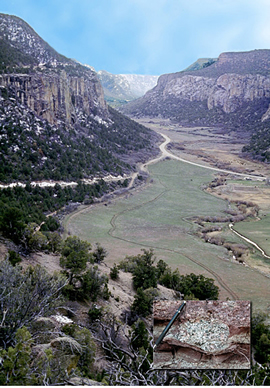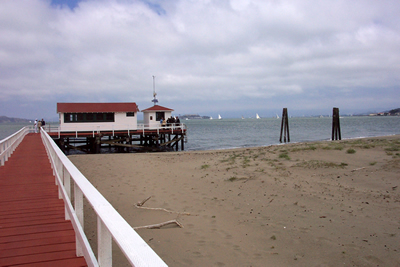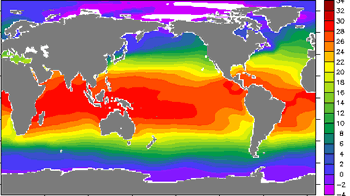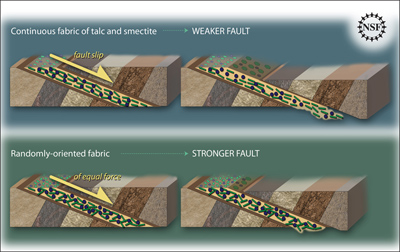Click on image for full size
Image Courtesy of Gerilyn Soreghan
Cold and Ice, and Heat, Episodically Gripped Tropical Regions 300 Million Years Ago
News story originally written on July 31, 2008
For a long time scientists have thought that, like today, the tropics stayed warm throughout Earth's last major glaciation 300 million years ago. New evidence shows that this isn't the case. In fact, the tropics experienced cold temperatures at that time.
Geologist Gerilyn Soreghan of Oklahoma University found evidence for this in an ancient glacial landscape in the Rocky Mountains of western Colorado. Three hundred million years ago, the region was part of the tropics. The continents were then assembled into the supercontinent Pangaea.
The ancient tropical glaciers were very close to the ocean, so the toes of the glaciers were probably less than 500 meters (1,640 feet) above sea level. This is much lower than the tropical glaciers of Earth's recent glacial times.
"The Late Paleozoic tropical climate was not buffered against cold from the high latitudes, as everyone had thought," said Soreghan. "The evidence we found indicates that glaciers were common at this time, even in tropical latitudes. This calls into question traditional assumptions of long-lasting equatorial warmth in the Late Paleozoic, and raises the possibility of large-scale and unexpected climate change in the tropics during that time."
"This study is an example of the wealth of untapped climate information stored in Earth's 'deep time' geologic record millions of years ago," said H. Richard Lane, program director in NSF's Division of Earth Sciences, which funded the research. "These kinds of discoveries may greatly improve our understanding and prediction of modern climate change."















